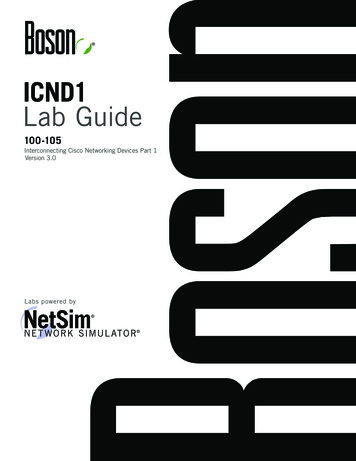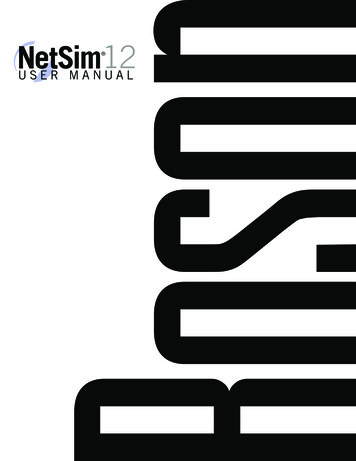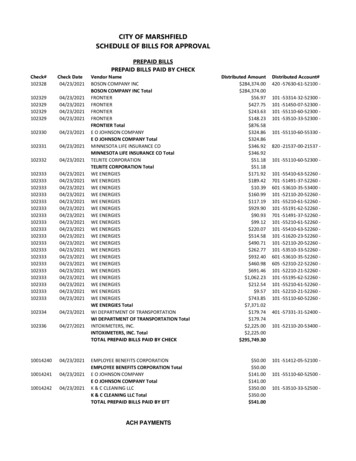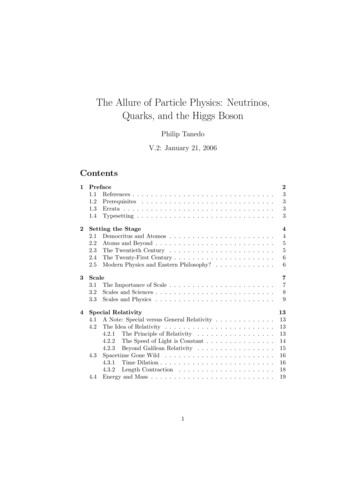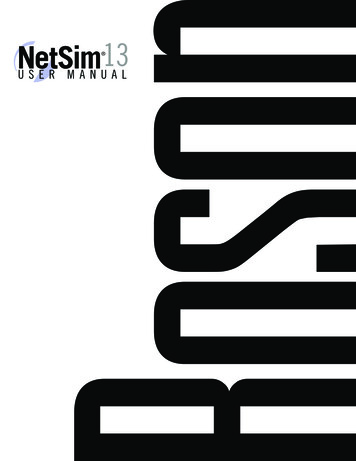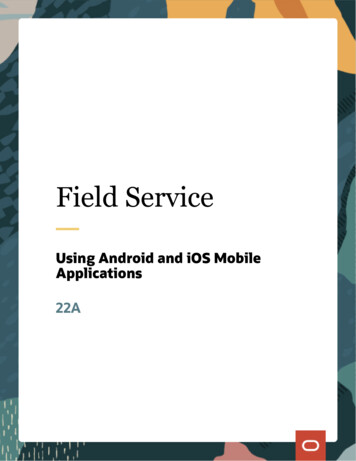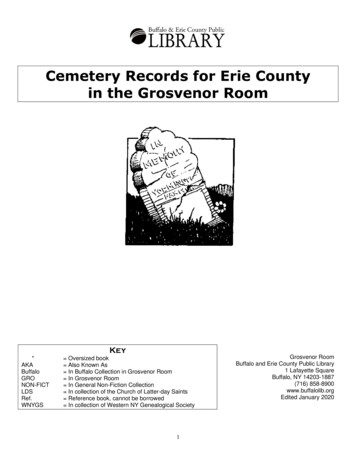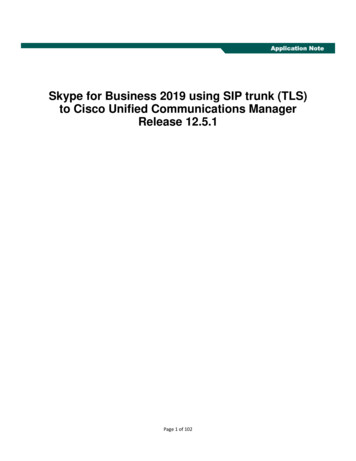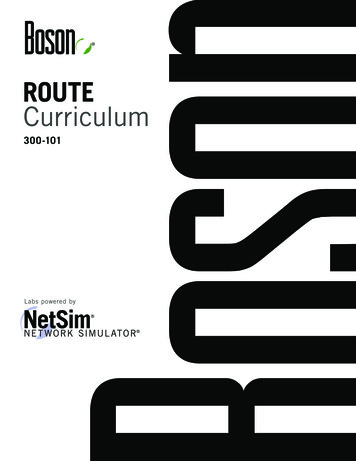
Transcription
ROUTECurriculum300-101Labs powered by
ROUTE300-101 CurriculumLM20170830/BV1.0 2017 Boson Software, LLCiii
2 5 C e n t u r y B l v d . , S t e . 5 0 0 , N a s h v i l l e , T N 3 7214 B o s o n . c o mThe labs referenced in this book have been printed in the Boson Lab Guide, which is included with thepurchase of the curriculum. These labs can be performed with real Cisco hardware or in the BosonNetSim Network Simulator version 11 or later. To learn more about the benefits of using NetSim or topurchase the software, please visit www.boson.com/netsim.Copyright 2017 Boson Software, LLC. All rights reserved. Boson, Boson NetSim, Boson NetworkSimulator, and Boson Software are trademarks or registered trademarks of Boson Software, LLC.Catalyst, Cisco, and Cisco IOS are trademarks or registered trademarks of Cisco Systems, Inc.in the United States and certain other countries. Media elements, including images and clip art,are the property of Microsoft. All other trademarks and/or registered trademarks are the propertyof their respective owners. Any use of a third-party trademark does not constitute a challenge tosaid mark. Any use of a product name or company name herein does not imply any sponsorshipof, recommendation of, endorsement of, or affiliation with Boson, its licensors, licensees, partners,affiliates, and/or publishers.iv 2017 Boson Software, LLC
ROUTE Table of ContentsModule 1: Basic Router Security and Management.1Overview. 2Objectives. 2Security Best Practices. 3Configuring an Enable Password. 4Encrypting Unencrypted Passwords. 6Copying Passwords Between Devices. 7Accessing Cisco Devices. 8Protecting CON, VTY, and AUX Ports. 9Configuring User Names and Passwords. 10Configuring Privilege Levels.11Authenticating with AAA. 13RADIUS vs. TACACS . 14Configuring AAA. 15Configuring AAA and RADIUS. 16Configuring AAA and TACACS . 18Configuring Authorization and Accounting. 20Configuring IPv4 ACLs to Control Remote Access. 21Configuring IPv6 ACLs to Control Remote Access. 22Requiring SSH for Remote Access. 23Logging. 24Understanding NTP. 25How NTP Stratum Works. 26Configuring the System Clock and NTP. 27Configuring NTP Peers. 29Verifying NTP. 30NTP Security. 31Configuring a Specific Source Interface. 32Authenticating NTP Time Sources. 33Configuring NTP Restrictions. 34NTP Version 4 and IPv6. 35Configuring Log Severity Levels. 36Configuring and Using a Logging Server. 38Monitoring. 40Understanding debug Commands.41Understanding SNMP. 43Using SNMP Data. 44SNMP Views. 46SNMP Versions. 47SNMP Feature Comparison. 48Configuring SNMPv1 and SNMPv2c. 49Configuring SNMPv3. 50Verifying SNMPv3. 52 2017 Boson Software, LLC
ROUTE Table of ContentsUnderstanding NetFlow. 53Configuring NetFlow. 55Viewing NetFlow Data. 56Understanding IP SLAs. 59Configuring IP SLA Echo. 60Verifying IP SLA. 62IP SLA Responders. 63Configuring IP SLA Jitter with Responder. 64IP SLA Authentication. 65Disabling or Replacing Unused Services. 66Review Question 1. 69Review Question 2. 71Review Question 3. 73Lab Exercises. 75Module 2: Basic Data Forwarding Concepts.77Overview. 78Objectives. 78TCP vs. UDP. 79User Datagram Protocol. 80Transmission Control Protocol. 81The TCP Three-way Handshake. 82Path MTU Discovery. 84MSS Adjustment. 85Windowing. 86Sliding Windowing. 88Selective Acknowledgments. 89Window Scaling. 90TCP Congestion Avoidance Issues. 91Tail Drop. 92Global Synchronization. 93TCP Starvation/UDP Dominance. 94Understanding IPv4 and IPv6 Addressing. 95Traffic Types. 96IPv6 Traffic Types. 97IPv6 Address Composition. 98IPv6 Address Prefixes. 99IPv6 Address Types. 100Understanding DHCPv4. 102DHCP Discover. 103DHCP Offer. 104DHCP Request. 105DHCP Acknowledgment. 106Content in these modules is available in the full version of thecurriculum. Please visit www.boson.com for more information.vi 2017 Boson Software, LLC
ROUTE Table of ContentsIPv6 Address Configuration. 107EUI-64 Interface IDs. 108Understanding Stateful and Stateless Address Configuration. 109How DHCPv6 Works.110Stateful DHCPv6.111Stateless DHCPv6 with SLAAC.112Configuring a DHCPv4 Client.113Configuring Automatic IPv6 Addressing on Clients.114Configuring a DHCP Server.115Configuring DHCP Server Options.116Other DHCP Options.117Configuring DHCP Relay.118Understanding NAT/PAT.119NAT/PAT Address Terminology. 120NAT Translation Methods.121Static NAT. 122Dynamic NAT. 123Port Address Translation. 124Configuring Interfaces for NAT/PAT. 125Configuring Static NAT. 126Configuring Dynamic NAT. 127Configuring PAT. 129NPTv6.131Using IPv6 in an IPv4 World. 132Dual Stack. 133NAT-PT and NAT64. 134Tunneling. 136ICMP.137Important ICMP Message Types. 138Routing Fundamentals. 139Content in these modules is available in the full version of thecurriculum. Please visit www.boson.com for more information.Understanding Router Path Selection. 140Router Packet Switching.141Displaying Tables.147Clearing Tables. 149Understanding Static Routes. 150Understanding IPv6 Static Routes. 152Understanding Dynamic Routes. 153Understanding Administrative Distance. 154Understanding Routing Metrics. 157Understanding Autonomous Systems. 158Understanding Routing Protocols. 159Understanding the Types of IGPs. 160Understanding Distance-Vector Routing Protocols. 161 2017 Boson Software, LLCvii
ROUTE Table of ContentsLearning Distance-Vector Routes. 162Updating Distance-Vector Routes. 163Preventing Distance-Vector Problems. 164Understanding the Counting to Infinity Problem. 165Understanding Maximum Counts. 167Understanding Routing Loops. 168Preventing Routing Loops. 169Understanding Link-State Routing Protocols.170Understanding Link-State Relationships.171Understanding the LSDB. 172Learning Link-State Routes.173Review Question 1.174Review Question 2. 177Review Question 3.179Review Question 4.181Lab Exercises. 183Module 3: Understanding RIP.185Content in these modules is available in the full version of thecurriculum. Please visit www.boson.com for more information.Overview. 186Objectives. 186RIP for IPv4. 187Route Processing. 189Routing Messages. 190Configuring RIP. 191Configuring the RIP Routing Process. 192Configuring Interface Parameters. 195Verifying RIP Operation. 196Securing RIP. 200RIP for IPv6. 201RIPng Similarities to RIPv2. 202RIPng Differences from RIPv2. 203Configuring RIPng. 204Enabling IPv6 Routing. 205Creating a RIPng Routing Process. 206Configuring the RIPng Routing Process. 207Configuring RIPng on Each Interface. 209Verifying RIPng Operation. 210Displaying General RIPng Protocol Parameters.211Displaying Detailed RIPng Process Parameters.212Displaying the RIPng Database.213Displaying RIPng Neighbor Addresses.214Displaying Installed RIPng Routes.215Securing RIPng. 216viii 2017 Boson Software, LLC
ROUTE Table of ContentsReview Question 1.217Review Question 2.219Review Question 3. 221Lab Exercises. 223Module 4: Understanding OSPF.225Overview. 226Objectives. 226OSPF for IPv4. 227Route Processing. 229OSPF Router Roles. 230OSPF Interface Types. 232Understanding the OSPF Router ID. 234Understanding Adjacency. 235Understanding the OSPF Hello Packet. 236DR/BDR Election. 237Neighbor States. 238Adjacency Caveats. 240Understanding the LSDB.241OSPF Message Types. 242LSA Types. 243Basic OSPF Area Types. 245Advanced OSPF Area Types. 247Configuring OSPF. 248Configuring the Routing Process. 249Configuring Areas. 250Configuring Routing Process Parameters.251Configuring Interface Parameters. 253Verifying OSPF Operation. 254Examining General OSPF Protocol Information.
2017 Boson Software, LLC iii ROUTE 300-101 Curriculum LM20170830/BV1.


